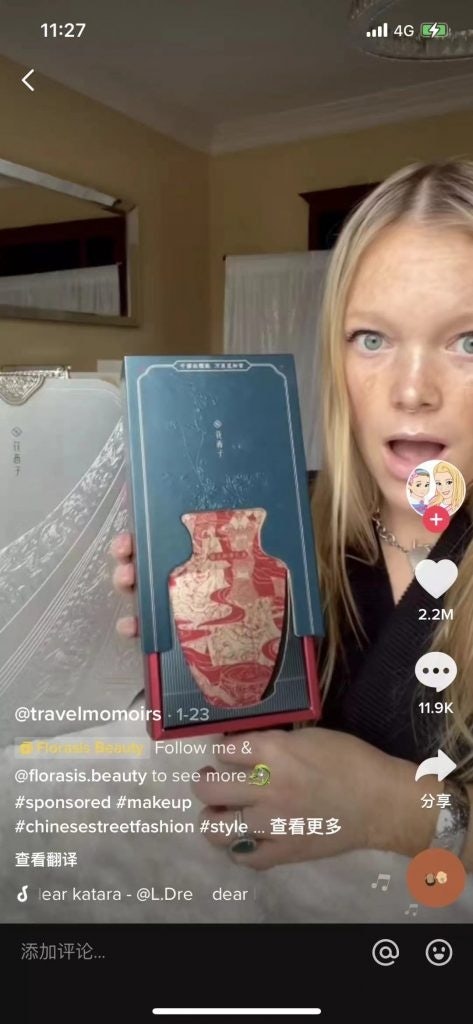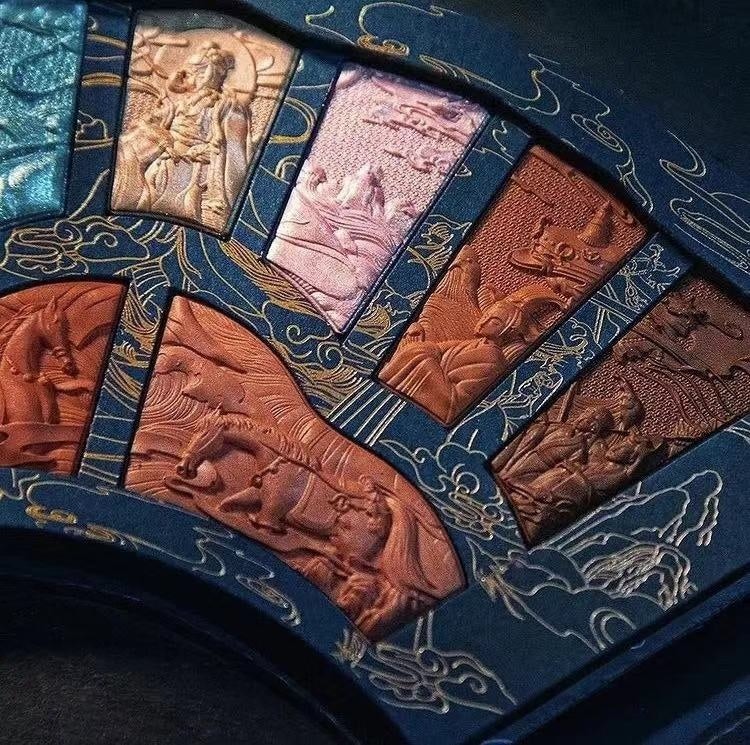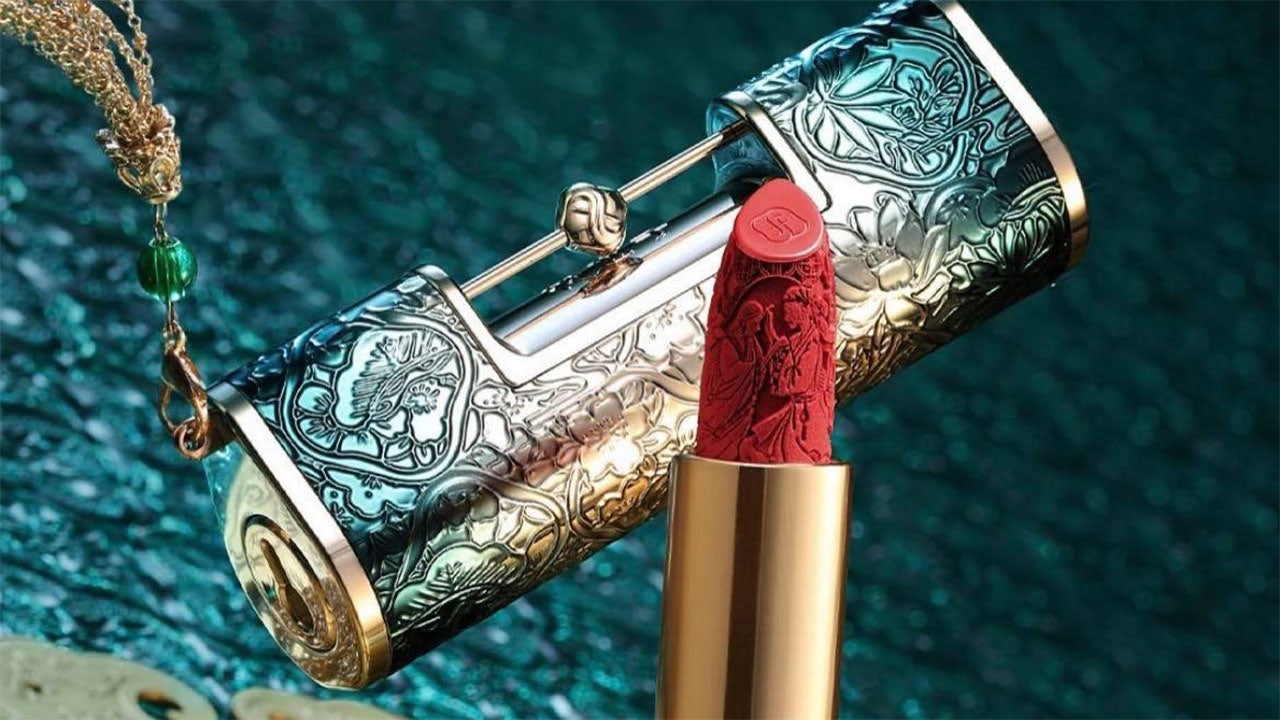Chinese cosmetics brand Florasis — or Huaxizi in Chinese — opened its official store on Amazon Japan in March 2021, the first time the C-beauty disruptor opened a store on an overseas e-commerce platform. The brand's best-selling Love Lock lipstick sold out soon after, soaring to the top three of the region’s Best Sellers Rank (BSR), which is updated hourly on the day of launch.
Over recent years, many K- and J-cosmetic firms have lost market shares to C-brands that have improved their product quality & design while launching successful, localized marketing campaigns. And in 2019, this market started to shift outside of China, too. Chinese makeup looks went viral on YouTube in Japan, and the renowned Japanese actress Satomi Ishihara was featured on the cover of Japan's VoCE magazine in a Chinese makeup look. Since then, Japanese word-of-mouth online ranker Cosme launched its own dedicated rankings of Chinese cosmetics.
As a brand specializing in “Chinese-style cosmetics,” Florasis has a certain advantage in the Japanese market, thanks to the recent “Chinese makeup hype.” As such, its ever-increasing demand from global consumers has accelerated the brand’s footprint internationally. According to data from Tmall’s 2020 Double 11 Shopping Festival, consumers from over 100 countries and regions purchased Florasis products on the platform, helping the brand rank No. 1 in overseas sales over that same period among all Chinese brands.
Here, Jing Daily analyzes how Florasis built its brand awareness in overseas markets even though it had to compete against top cosmetics players with localized marketing strategies.
TikTok facilitates an “Eastern Wave”#
Opening up the market with Amazon is the first step toward going global for most brands because powerful third-party platforms like Amazon can help brands rapidly gain a presence in overseas markets. However, after q massive shutdown of stores on Amazon this April, Chinese cross-border sellers are still looking to supplement this strategy.
After President Trump’s ban on TikTok in 2020, the platform not only recovered from the crisis but also started a new phase of astonishing growth, becoming the most downloaded social app globally. The acceleration of its e-commerce deployment has become highly meaningful for brands wanting to transform themselves into DTC sellers in global markets. In August of the same year, Florasis, which had already caused a sensation on global social media platforms, cast its eyes on the viral platform and became one of the first China brands to expand overseas via the platform.
Compared to the more mature but traditional social media platforms, TikTok still exploited its advantages as an emerging player by offering brands more traffic support. Meanwhile, it is accelerating its e-commerce deployment. On June 20, it started allowing cross-border transactions in the UK and invited Chinese brands to launch on the platform. And in August, it announced enhanced cooperation with the e-commerce provider Shopify and encouraged users to buy on TikTok.
Florasis is still expanding its global footprint and has been known for its marketing But, to optimize its business, it still must create localized marketing strategies in many countries.
While stand-alone shops are more friendly than third-party platforms for global consumers, TikTok, with its wide range of audiences and massive traffic, can help sellers solve the problem of missing traffic at stand-alone shops. Of course, Florasis, which never intended to stop at the Japanese market, could not put all its eggs in one basket. In fact, according to Seller Center, the Florasis website connected with Shopify as early as July 2019.
An omnichannel strategy for DTC brands#
Although it pushed its bid for global expansion, driving traffic to stand-alone online shops is a headache. But now, with its organic follower accumulation (thanks to TikTok), the brand has set sail. On the main page of the Florasis TikTok account, the link to its Instagram page got replaced by its overseas website. Juliette Duveau, a co-founder of the marketing consultancy The Chinese Pulse, recognizes the feasibility of Florasis' “TikTok plus stand-alone shop” model but also thinks the brand should expand to offline sales in the future.
“For DTC brands, digital and social networks are a central way to get awareness, connect, and interact horizontally with their consumers," she says. "The physical store plays an important role in presenting the brand image and core values and is a necessity to complement the top online activities." Major DTC or Instagram beauty brands have developed their offline stores and distribution channels while offering real-life experiences and product testing to their clients, helping establish the brand's credibility, as well.

Oriental aesthetics and storytelling for modern shoppers#
Florasis is a great storyteller, and with marketing engraved on its DNA, it can reach a wider audience through its unique Eastern aesthetics. But visually speaking, it is a winner, too. Florasis boasts Eastern-style packaging, which can more easily attract international consumers when featured in short videos. Duveau says it has both a “super interesting brand identity and storytelling for Western countries,” which makes it stand out from the hundreds of new brands popping up on social media. This specialty was developed thanks to the brand’s many years of experience in the Chinese market.
Currently, it has 763,400 followers and 3.9 million likes on TikTok — healthy growth compared to where it stood one year ago. Products are now promoted by top beauty influencers, including @jeffreestar (2 million followers), @Jonysios (2.4 million followers), and @nadina_ioana (8.6 million followers). In Particular, a video posted by @travelmomoirs that introduced the brand's Love Lock lipstick gained over 2.2 million likes and many comments from global netizens inquiring about how to purchase the product. “A strong marketing approach on social media is a necessity to develop awareness for beauty brands in Europe and America, gain notoriety, and generate sales,” Duveau notes.
One strategy does not fit all markets#
According to Florasis’ overseas website, the brand now offers free shipping to several countries, including Japan, Korea, Singapore, Malaysia, Thailand, Australia, the US, the UK, France, Germany, Italy, Spain, and Ukraine. But it is still expanding its global footprint. Although Florasis has been known for its marketing, with its target markets increasing, it still needs to create localized marketing strategies for many countries.
Baijingapp (白鲸出海), a service provider helping Chinese brands go global, pointed out that Japanese consumers seldom define their lips and prefer a more natural, translucent, and moisturized look. Although Florasis products have been called too greasy, they nonetheless meet the requirements of Japanese women for naturalness and have helped the brand win a place in that market. However, it remains questionable whether these features work in other countries.

Olivia Plotnick is the founder of the social media marketing agency Wai Social and has bought Florasis products. Plotnick admitted she was disappointed with them, stating that their “quality does not go unnoticed. I can’t say I’d purchase from the brand again.” In an era when consumers everywhere are looking to social media for reviews, a brand can fall as rapidly as it rises if customers are unhappy. “If your product doesn’t live up to the hype, you’ll be hemorrhaging your marketing budget and constantly looking for new customers instead of leveraging existing ones,” Plotnick adds.
Wai Social’s founder also thinks Florasis could adopt a marketing strategy that's more focused on “clean beauty” and transparency for these markets rather than leveraging celebrities and pretty packaging. When young consumers who pay more attention to environmental issues prefer organic and non-toxic “clean beauty,” it is time for brands to look toward sustainable development.
Usually, the first brand in a market fails. But despite its teething issues, Florasis might be able to break out of that mold.
Translation: Bregitte Xu/Panda Translation Agency & Wenzhuo Wu
